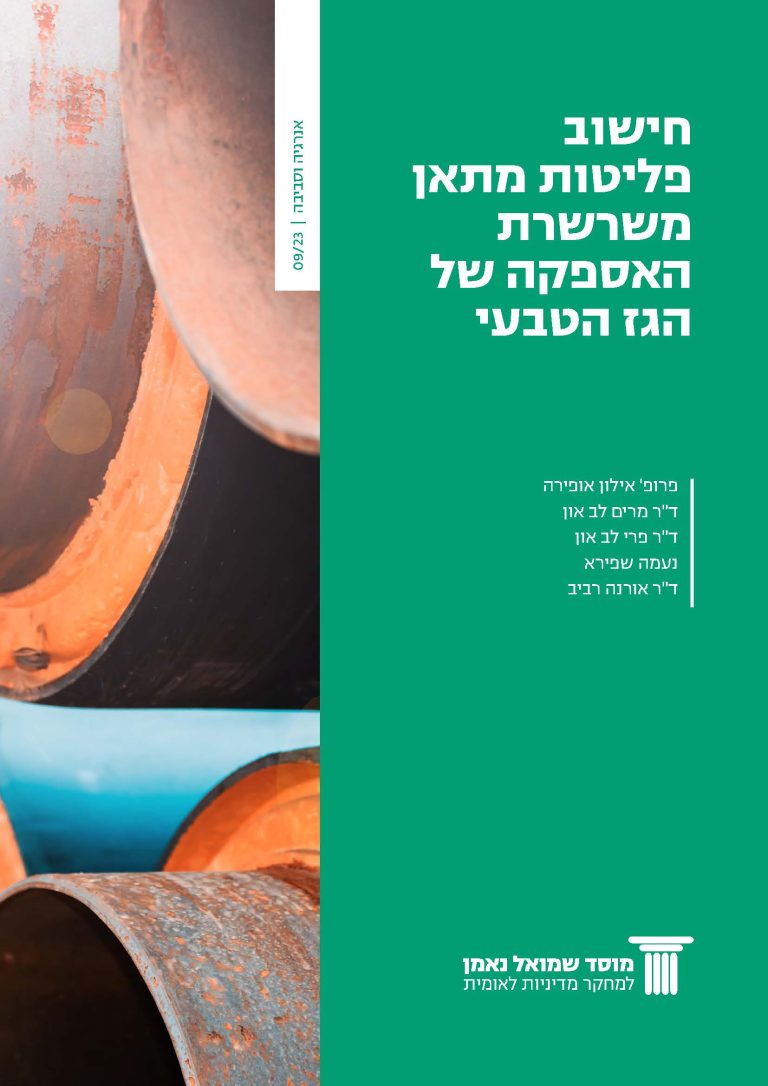Methane gas, the main component of natural gas, is the second most impactful greenhouse gas on global greenhouse gas emissions from anthropogenic sources, after carbon dioxide, and is currently the focus of efforts (along with other short-lived greenhouse gases) to reduce global warming of the atmosphere. Methane, as a contributor to the greenhouse effect, is characterized by a global warming potential coefficient (GWP) of over 25 times compared to carbon dioxide over a 100-year time horizon.
For Israel to be able to correctly assess the benefits of using natural gas, reduce its annual greenhouse gas emissions inventory, and meet its international commitments to reduce greenhouse gas emissions, it is of great importance to professionally assess the scope of emissions from Israel’s natural gas supply chain.
The goal of this study is to calculate methane emissions from the natural gas industry in Israel from beginning to end, including production, processing, transmission, distribution, and end users’ emissions, while evaluating existing information and data related to the best methodology, and defining additional data that is necessary and how it should be collected.
It is evident that there are gaps between emissions reports in Israel and calculations performed according to coefficients from various sources. This point ascertains that the use of emission coefficients employed by international organizations and other countries cannot provide an unequivocal answer to the assessment of the scope of emissions in Israel, since the characteristics of the natural gas industry differ substantially from country to country – both due to the age of the facilities, methods and materials used in their construction, and due to the technologies and control measures implemented in their operation.
To verify the discrepancy between the different orders of magnitude of emissions calculated in this assessment, a transparent, comprehensive and independent examination is required of the various equipment components and the scope of activity for all segments of the natural gas supply chain in Israel, together with the extent of the emissions contributed by them. When the gap between local data and calculations according to Tiers 1 or 2 is large, for example, in the production, processing and transmission segments, one should strive to establish and optimize the calculation according to Tier 3 by collecting detailed data and verifying them through an independent professional body. When local data is lacking and there is a segment with negligible impact on the national emissions inventory, for example, in the distribution segment, Tier 1 methods can be used.
The purpose of the recommendations presented in this document is to improve the toolbox for characterizing data on emissions to the air, to improve data quality through the combined use of methods based on the actual activity scope alongside with methods based on the interpolation of atmospheric measurements and increased data availability and transparency.
For more details and recommendations, see the English abstract.












